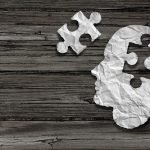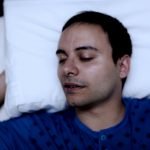How Does Cancer Metastasis Happen?
Node Smith, ND
Cancer Metastasis can be Triggered by DNA Leaked within Tumor Cells
According to a recent research study from Weill Cornell Medicine and Memorial Sloan Kettering Cancer Center, cancer metastasis can be triggered by DNA leaked from within tumor cells.1 Cancer metastasis is the seeding of cancerous cells to other parts of the body and formation of secondary tumors. Exactly how this process develops has been a central mystery of cancer biology.
Chromosomal Instability
The findings of this study seem to have at least partly solved this question. The researchers mapped out the complex process resulting from chromosomal instability. Chromosomal instability is a prominent feature of cancer cells that causes DNA to be copied incorrectly with each replication; daughter cells thus have unequal DNA content. Using breast and lung cancer models the researchers found that this chromosomal instability creates certain changes in the cell that ultimately results in metastasis.
Lead Author, Dr. Samuel Bakhoum, Explains the Findings
Lead author, Dr. Samuel Bakhoum, a Holman research fellow at Weill Cornell Medicine, explains the findings: “We showed that chromosomal instability can cause a leakage of DNA from the nuclei of cancer cells, leading to a chronic inflammatory response within the cells–and the cells essentially can hijack that response to enable themselves to spread to distant organs.”
Uncovering the Basic Science Data Behind Metastasis Could be life Altering
Since the majority of cancer deaths are attributable to metastasis, uncovering the basic science data behind these mechanisms is essential for therapies that would prevent metastasis from occurring. Previous studies have linked chromosomal instability to metastasis, though the exact mechanism has been unclear.
Usually, DNA in the Cytosol is a Signal of Viral Infection
The research experiment itself extrapolates on a process by which chromosomal unstable DNA insights cellular inflammatory responses which creates leakage of chromosomes from the nucleus. When the DNA enters the cytosol it becomes encapsulated in a “micronuclei” which eventually does rupture releasing the DNA into the cytosol. Typically, DNA in the cytosol is a signal of viral infection – because viruses release DNA into the cell when then first penetrate the cell membrane. This signals type of molecular machine called the cGAS-STING pathway (this is essentially the body’s antiviral software).
Study Observed cGAS-STING Activation in the Infected Cells
The research study observed this cGAS-STING activation in the infected cells. Though, instead of this pathway leading to cellular death, which typically occurs during a healthy viral response, the tumor cells were able to evade apoptosis. In addition, they were able to use other parts of the viral response set in motion to separate from the tumor and become mobile throughout the body – a phenomenal feat of immune system mimicry.
Next Steps of Research
The next steps of this research is to determine whether there can be a block put on the cells ability to mimic the immune cellular response in this way. Theoretically, this could inhibit the cell from separating from the primary tumor and seeding to distant areas of the body.
Source:
- Bakhoum SF, Ngo B, Laughney AM, et al. Chromosomal instability drives metastasis through a cytosolic DNA response. Nature. 2018
Image Copyright: <a href=’https://www.123rf.com/profile_inbevel13′>inbevel13 / 123RF Stock Photo</a>
 Node Smith, ND, is a naturopathic physician in Portland, OR and associate editor for NDNR. He has been instrumental in maintaining a firm connection to the philosophy and heritage of naturopathic medicine among the next generation of docs. He helped found the first multi-generational experiential retreat, which brings elders, alumni, and students together for a weekend camp-out where naturopathic medicine and medical philosophy are experienced in nature. Four years ago he helped found the non-profit, Association for Naturopathic ReVitalization (ANR), for which he serves as the board chairman. ANR has a mission to inspire health practitioners to embody the naturopathic principles through experiential education. Node also has a firm belief that the next era of naturopathic medicine will see a resurgence of in-patient facilities which use fasting, earthing, hydrotherapy and homeopathy to bring people back from chronic diseases of modern living; he is involved in numerous conversations and projects to bring about this vision.
Node Smith, ND, is a naturopathic physician in Portland, OR and associate editor for NDNR. He has been instrumental in maintaining a firm connection to the philosophy and heritage of naturopathic medicine among the next generation of docs. He helped found the first multi-generational experiential retreat, which brings elders, alumni, and students together for a weekend camp-out where naturopathic medicine and medical philosophy are experienced in nature. Four years ago he helped found the non-profit, Association for Naturopathic ReVitalization (ANR), for which he serves as the board chairman. ANR has a mission to inspire health practitioners to embody the naturopathic principles through experiential education. Node also has a firm belief that the next era of naturopathic medicine will see a resurgence of in-patient facilities which use fasting, earthing, hydrotherapy and homeopathy to bring people back from chronic diseases of modern living; he is involved in numerous conversations and projects to bring about this vision.









